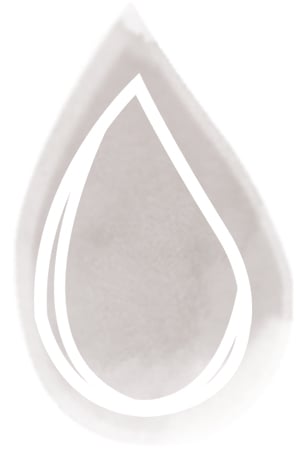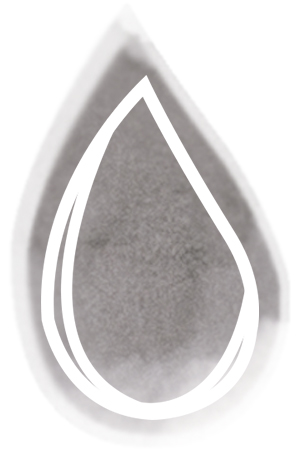Have you got discoloured water?
Discoloured water is usually caused by tiny bits of material from pipes or air bubbles trapped in your water.
 |
 |
 |
 |
 |
 |
| Orange, brown or yellow | White or cloudy | Green | Blue | Bits in water | Black or dark brown |
Orange, brown or yellow
Orange, brown or yellow
Why does this happen?
This can happen occasionally when there is a large change in flow in the water mains. It’s usually caused by rust particles that are loosened by fast flowing water, for example when:
- there has been a burst water main
- a large surge in water usage
- the fire brigade is using or testing fire hydrants.
You can check the In Your Area map to see if there are any known issues nearby which may be causing the discolouration.
What should I do?
Run a cold water tap that is fed directly off the mains (this is usually the cold water tap in the kitchen) to clear out any of the discoloured water which is held in your pipework. Check the supply every ten minutes and if it doesn’t clear within an hour, please call us.
White or cloudy
White or cloudy
Why has this happened?
Your water may appear cloudy or white if air has become trapped in the pipes usually when repair work has been carried out. The air dissolves in the water when it’s under pressure but, once you turn your tap on and the pressure is released, tiny air bubbles are formed. This gives the water its white or cloudy appearance. We call this aeration.
What should I do?
You don’t usually need to do anything – the cloudiness will disappear in time as the air is released.
Blue or green
Blue or green
Why has this happened?
Blue or green water is sometimes caused by the formation of copper salts which dissolve in water, giving a blue or turquoise appearance. It is most normally noticed as a stain on fixtures and fittings, especially those made of enamel.
There is little or no copper in the raw water sources of South West Water. We do not use copper in any of our distribution systems, any copper found in the water supply will most probably come from domestic copper pipe work.
Another potential cause of blue water relates to the use of blue coloured disinfectant tablets in toilet cisterns. If the toilet does not have the correct plumbing it is possible for blue water to syphon out of the cistern into the domestic plumbing.
What should I do?
Check the condition of your domestic plumbing. If it is old and starting to deteriorate, this will increase the chance of getting blue water. If you have had some recent plumbing work done, check that the plumber has not used a different metal pipe connected to the copper pipe work. This can cause a galvanic action leading to copper being dissolved. Check your water pipes are correctly earthed. Poor earthing can lead to electrolysis and copper becoming dissolved. If your boiler or hot water system has a sacrificial anode, check this has not fully corroded. It may need replacing. (This will probably need the services of a plumber).
If the blue water is coming from your toilet cistern it will need repairing by a qualified plumber.
Bits in water
Bits in water
Why has this happened?
Soft bits in water are usually caused by biological growths which grow on damp surfaces such as the end of taps and on showerheads.
What should I do?
Regularly clean tap spouts and showerheads with a household disinfectant to prevent the growth of slimes.
Airing your kitchen and bathroom regularly can also help to limit bacteria and mould.
Here are a few ways to keep your kitchen and bathroom aired:
- after you’ve cooked or showered, open the window slightly.
- if you have double-glazed windows, keep the trickle vents open (these are normally narrow flaps at the top of the windows).
- install extractor fans or use a dehumidifier.
- avoid using aerosols, as they often contain ingredients that bacteria and moulds can feed on.
Black or dark brown
Black or dark brown
Why has this happened?
Black or dark brown coloured water is associated with manganese. Very low levels of manganese can accumulate over time in the water mains. This can become disturbed if there is a large change in flow, for example following a burst main, resulting in temporary discolouration.
What should I do?
Run a cold water tap that is fed directly off the mains (this is usually the cold water tap in the kitchen) to clear out any of the discoloured water which is held in your pipework. Check the supply every ten minutes and if it doesn’t clear within an hour, please call us.
Discolouration is normally short lived following a burst or repairs to our network and should clear after running your cold kitchen tap for an hour. Sometimes it may persist due to the size of the burst or time taken to make the repair but it shouldn’t last beyond 24 hours. We will normally flush the pipes after a repair to clear the sediment and get your water running clear again.
If you’re on a meter and have had to run your tap to clear the discolouration for more than an hour, fill in this form and we’ll credit your account to cover the cost of the water.
Play your part, be water smart
Don’t waste the water you run from your tap, collect and use it in your garden, or to wash your car. Save water, help the environment and save money off your bills too! Every litre saved is a litre left in the environment. The less water we use, the more we can keep our rivers and streams flowing and nature thriving.

